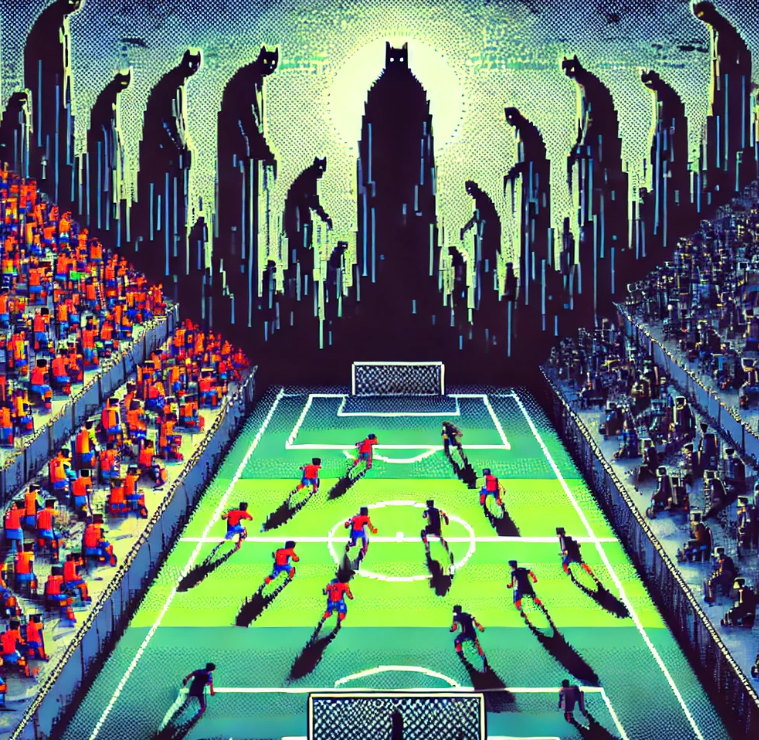
Guarding Our Fields: Threats to Community Sports Clubs
Community sports clubs (CSOs) are more than just places to practice sports; they are the heartbeats of neighborhoods, where friendships are forged, skills are developed, and dreams are pursued. For many, these clubs represent a safe haven—a place where the values of teamwork, perseverance, and fair play are instilled. But what if I told you that beneath the surface of some of these cherished institutions, there lies a growing threat, one that could shatter the very foundations on which they stand?
Imagine a small town, where everyone knows each other, and the local football club is the pride of the community. It’s a place where parents cheer from the sidelines, children run freely, and young athletes aspire to greatness. Now, picture this idyllic setting being slowly infiltrated by individuals with criminal intentions, their actions hidden in plain sight, eroding the integrity of the club and, by extension, the community it serves.
The Shadow Over Community Sports
This isn’t just a hypothetical scenario; it’s a reality for an increasing number of CSOs. Recent research has unveiled a troubling trend: community sports organizations, once seen as bastions of positive social behavior, are becoming susceptible to criminal interference. The implications are far-reaching, potentially undermining the trust and safety that these clubs are meant to foster.
You might be wondering, how could this happen? How could a place dedicated to youth development and community bonding fall into the hands of those with sinister motives? The answer lies in a combination of factors—legal, financial, structural, cultural, and environmental—that create a perfect storm, making these organizations vulnerable targets.
The Allure of Sponsorship: A Double-Edged Sword
One of the most significant factors contributing to this vulnerability is financial dependency. CSOs, particularly smaller clubs with high ambitions, often rely heavily on sponsorships to stay afloat. While sponsorship can provide much-needed financial support, it can also open the door to criminal elements.
Take the case of a football club in the Netherlands, once a symbol of community pride, now a cautionary tale. Struggling with dwindling membership and limited resources, the club welcomed a wealthy sponsor with open arms. His financial contributions were seen as a lifeline, allowing the club to compete at higher levels. However, as the sponsor’s influence grew, so did his control over the club’s operations. The board, eager to maintain the sponsor’s support, turned a blind eye to the increasingly questionable methods he employed to fund the club’s activities.
What started as a seemingly innocent arrangement soon spiraled into a web of illegal activities, with the sponsor allegedly using the club to launder money and make under-the-table payments to players. The club, once a beacon of community spirit, became a vessel for criminal enterprise, with its members caught in the crossfire.
The Silent Infiltration
The structural makeup of CSOs further exacerbates their susceptibility. Many of these organizations are small, volunteer-driven, and lack formalized business processes and control mechanisms. This makes it easier for external influences to seep in unnoticed.
In the case mentioned earlier, the sponsor didn’t just provide financial backing; he became deeply involved in the club’s day-to-day operations, making key decisions and even coaching the team. The board, composed of volunteers, was ill-equipped to challenge his authority. Over time, the sponsor’s actions were normalized, with the board rationalizing that his methods, though unorthodox, were necessary for the club’s survival.
This normalization of unethical behavior is a common thread in cases of criminal interference. Once such behavior becomes routine, it’s no longer seen as problematic—it’s just how things are done. This creates a permissive environment where criminal activities can thrive, hidden in plain sight.
When Trust Becomes a Liability
Cultural factors also play a critical role in this dynamic. CSOs often operate as tight-knit communities, where trust and loyalty are paramount. New members are socialized into this culture, learning to accept certain practices, even if they’re questionable.
In smaller clubs, where everyone knows each other, this trust can be both a strength and a weakness. On the one hand, it fosters a strong sense of community; on the other, it can lead to over-trust, where members fail to question the actions of those in positions of power. This was evident in the Dutch football club case, where the sponsor’s deep ties to the community shielded him from scrutiny, allowing him to operate unchecked for years.
The Road to Recovery
The fallout from criminal interference in CSOs can be devastating, but it’s not insurmountable. In the case of the Dutch football club, the community eventually rallied to rebuild, adopting new policies focused on youth development and reinforcing the club’s role in the neighborhood. However, the scars of the past linger, serving as a stark reminder of what can happen when vigilance is lost.
For other CSOs, this story should serve as both a warning and a call to action. Safeguarding these organizations requires a proactive approach—one that includes thorough background checks for sponsors, stronger financial oversight, and a commitment to transparency. It also means fostering a culture where unethical behavior is not normalized, but challenged and corrected.
Moving Forward: A Shared Responsibility
As members of our communities, we all have a role to play in protecting the integrity of our local sports clubs. Whether you’re a parent, a coach, or simply a supporter, staying informed and engaged is crucial. Ask questions, get involved in governance, and don’t be afraid to speak up if something doesn’t seem right.
The world of sports is built on the values of fair play and respect. Let’s ensure that these values extend beyond the field and into the very fabric of our community organizations. By doing so, we can help preserve the sanctity of these spaces, ensuring that they remain safe, supportive environments for all who walk through their doors.
Discussion Questions
- How can community sports organizations strike a balance between financial support and maintaining ethical standards?
- What steps can local communities take to increase oversight and prevent criminal interference in their sports clubs?
Unlock Science Secrets
Discover revolutionary research and innovative discoveries with ‘This Week in Science’! Designed for educators and science lovers, our free weekly newsletter offers insights that can transform your approach to science. Sign up now and deepen your understanding and passion for science. If you liked this blog, please share it! Your referrals help This Week in Science reach new readers.



